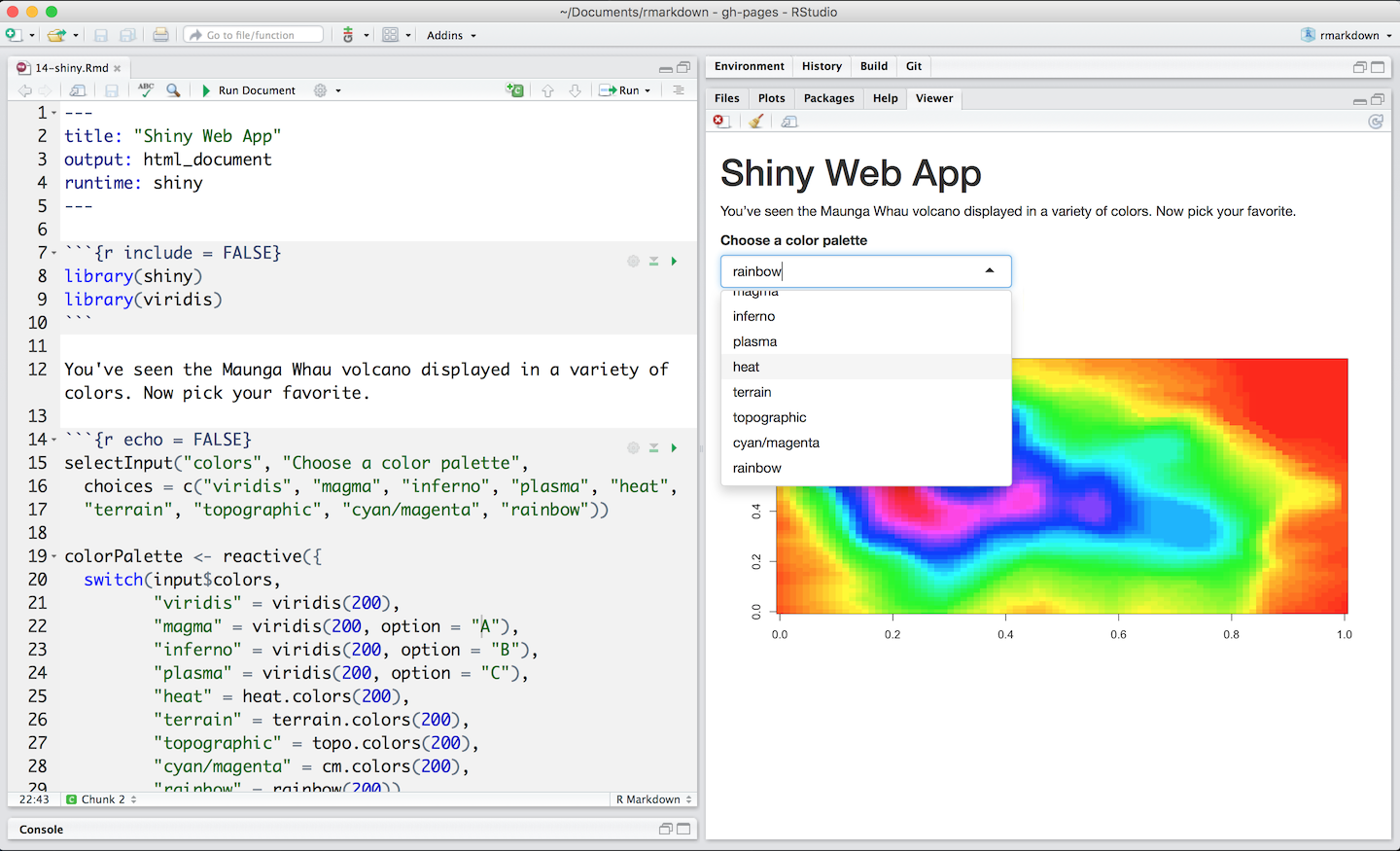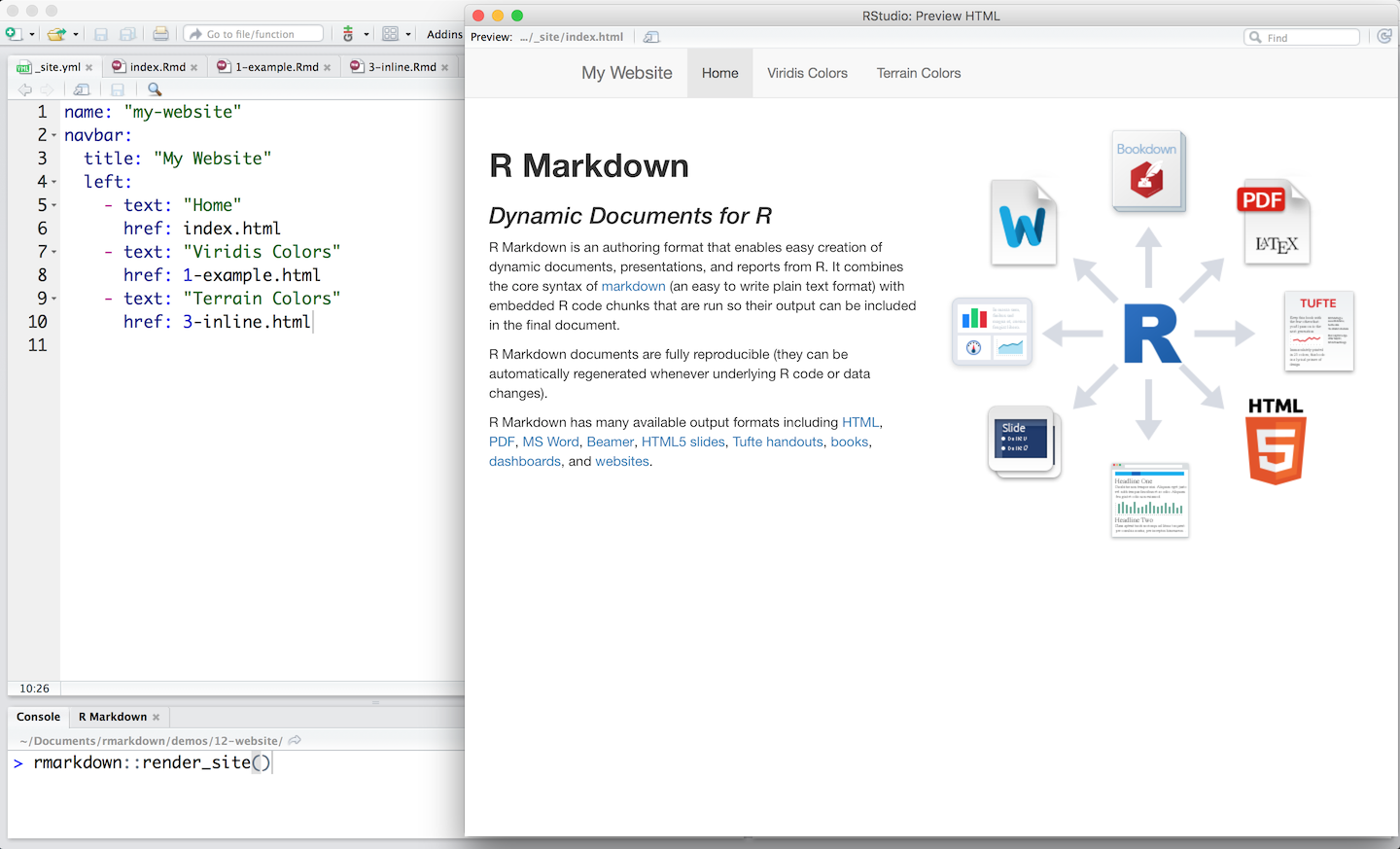In the previous tutorials we’ve learned about the R Markdown format and how to create a report using R Markdown in RStudio. In this tutorial, we will render or knit an R Markdown document to a web friendly, html format using the Rknitr package. knitr can be used to convert R Markdown files to many different formats including: html, pdf, GitHub markdown (.md) and more.
Learning Objectives
Kmplayer blu ray codec. At the end of this lesson, you will:
R Markdown Cheat Sheet learn more at rmarkdown.rstudio.com rmarkdown 0.2.50 Updated: 8/14 1. Workflow R Markdown is a format for writing reproducible, dynamic reports with R. Use it to embed R code and results into slideshows, pdfs, html documents, Word files and more. To make a report. Markdown publication can be published on. R Markdown provides an authoring framework for data science. You can use a single R Markdown file to both save and execute code generate high quality reports that can be shared with an audience. GFM Markdown table syntax is quite simple. It does not allow row or cell spanning as well as putting multi-line text in a cell. The first row is always the header followed by an extra line with dashes '-' and optional colons ':' for forcing column alignment.
Rich Markdown editor StackEdit’s Markdown syntax highlighting is unique. The refined text formatting of the editor helps you visualize the final rendering of your files.
- Be able to produce (
knit) anhtmlfile from anR Markdownfile. - Know how to modify chuck options to change what is rendered and not rendered on the output
htmlfile.
R Markdown Online Calculator

R Markdown online, free

What You Need
You will need the most current version of R and, preferably, RStudio loaded on your computer to complete this tutorial. You will also need an R Markdown document that contains a YAML header, code chunks and markdown segments.
Install R Packages
- knitr:
install.packages('knitr') - rmarkdown:
install.packages('rmarkdown')
What is Knitr?
knitr is the R package that we use to convert an R Markdown document into another, more user friendly format like .html or .pdf.
The knitr package allows us to:


- Publish & share preliminary results with collaborators.
- Create professional reports that document our workflow and results directly from our code, reducing the risk of accidental copy and paste or transcription errors.
- Document our workflow to facilitate reproducibility.
- Efficiently change code outputs (figures, files) given changes in the data, methods, etc.
The knitr package was designed to be a transparent engine for dynamic report generation with R – Yihui Xi – knitr package creator
When To Knit: Knitting is a useful exercise throughout your scientific workflow. It allows you to see what your outputs look like and also to test that your code runs without errors. The time required to knit depends on the length and complexity of the script and the size of your data.
How to Knit
R Markdown Online Editor
To knit in RStudio, click the Knit pull down button. You want to use the Knit HTML option for this lesson.
When you click the Knit HTML button, a window will open in your console titled R Markdown. This pane shows the knitting progress. The output (html in this case) file will automatically be saved in the current working directory. If there is an error in the code, an error message will appear with a line number in the R Console to help you diagnose the problem.
Data tip: You can run knitr from the command prompt using: render(“input.Rmd”, “all”).
View the Output
Rosetta stone russian 1 5 torrent. When knitting is complete, the html file produced will automatically open.
Notice that information from the YAML header (title, author, date) is printed at the top of the HTML document. Then the html shows the text, code, and results of the code that you included in the Rmd document.
R Markdown Online Editor
Challenge Activity
Add the code below to your .Rmd document. Then knit to .html format.
Yangon map pdf free download. When you knit your .Rmd file to pdf, the plot you produce should look like the one below. Not so pretty, eh? Don’t worry - we will learn more about plotting in a later tutorial!

Where is the File?
In the steps above, we downloaded a file. However, where did that file go on your computer? Let’s find it before we go any further.
Is the boulder-precip.csv file there?
